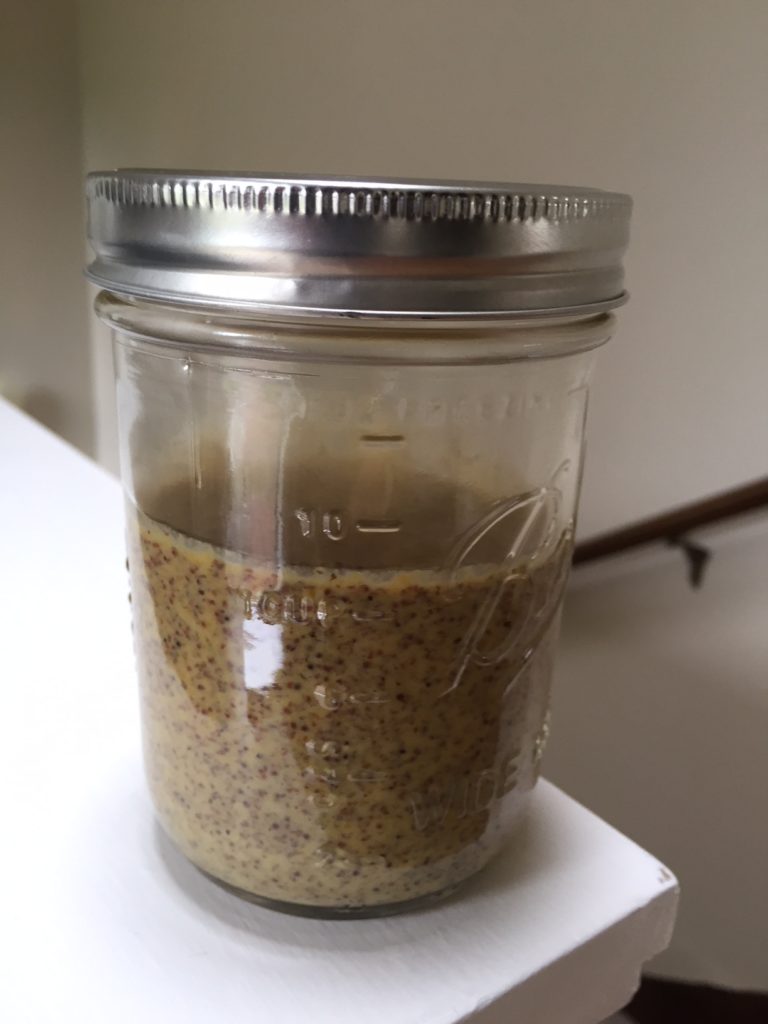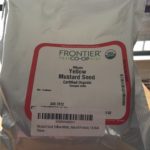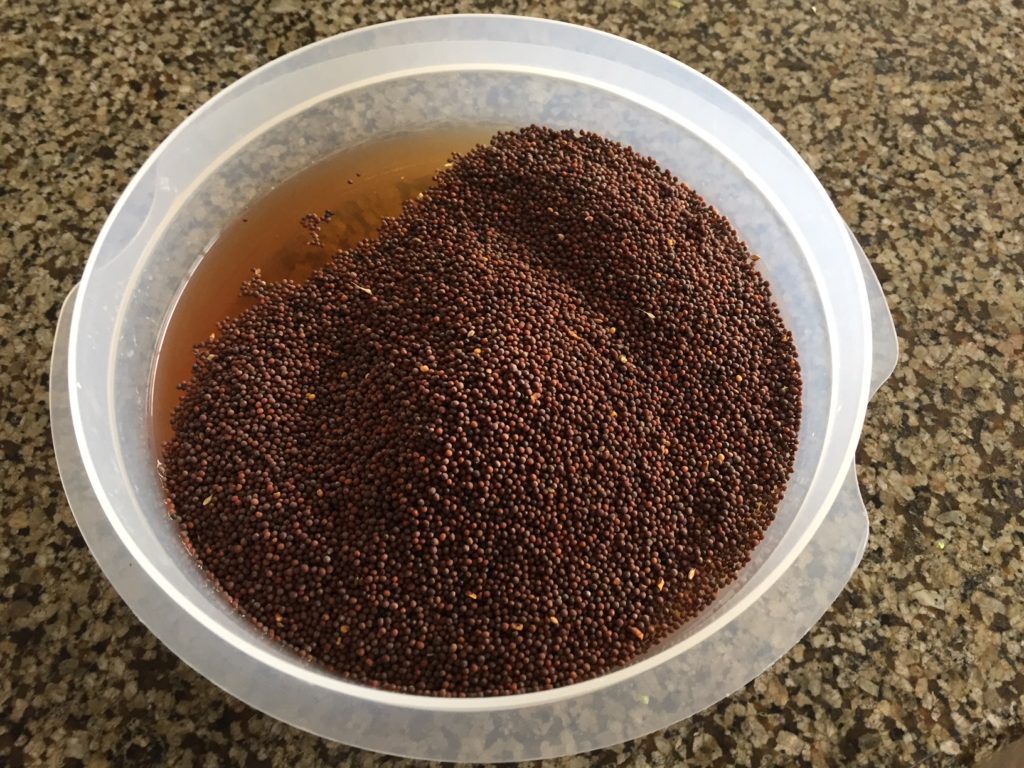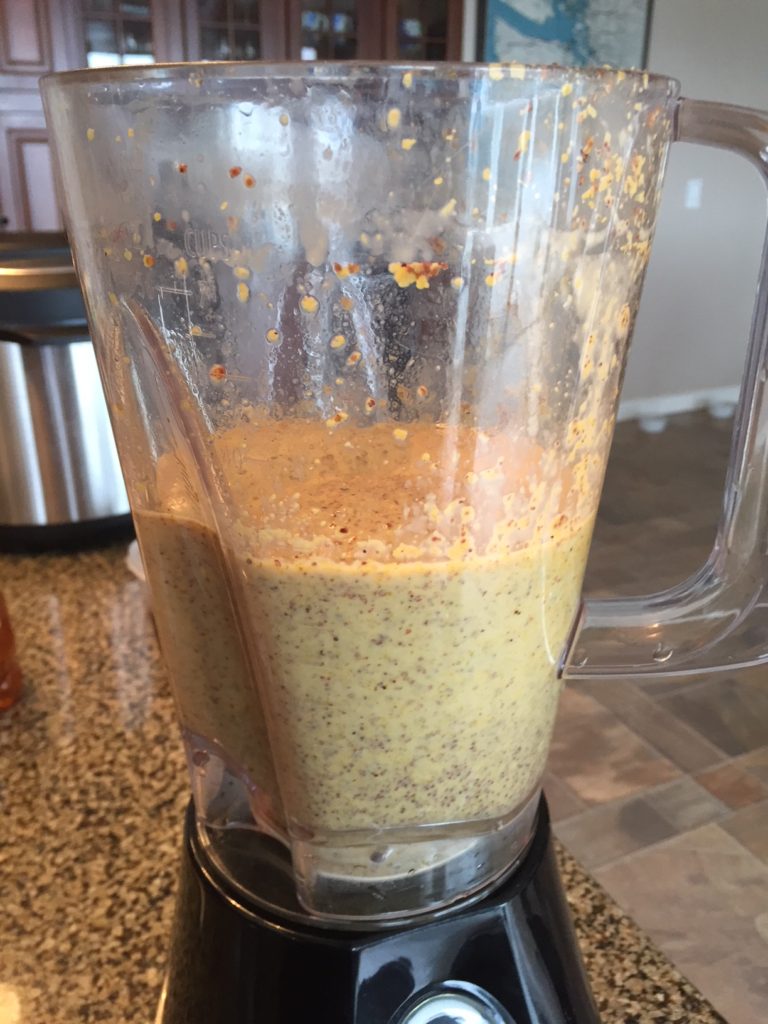Homemade mustard is a simple, basic process that then can be interpreted a hundred different ways based on viscosity, flavor profile, depth of spice and exactly what kind of dish(es) you want the condiment to enhance.

There are three kinds of mustard seeds readily available (I like ordering through Amazon and finding organic varieties).
Yellow seeds
Using these as your base will yield the closest thing to a ballpark-style mustard with an added tangy component. Almost like a crunchier version of Grey Poupon.
Brown seeds
For a deeper, spicier blend that will taste like a classic Bavarian-style mustard.
Black seeds
Like a Guinness to a Stella, here is your stout flavor, super deep like dark coffee, but a blast to the nostrils.
Servings: One 8-oz jar

¾ C apple cider vinegar (white wine vinegar is also okay)
½ C very cold water (or beer for an even heartier Germanic-style)
1 T brown sugar
2/3C seeds of choice
Salt pinch
Combine all elements except seeds in a glass bowl and stir to combine sugar and liquids. Pour in seeds and gently work to stir and submerge as best as possible. Cover tightly with plastic wrap and let rest on the counter for 24 hours.

After 24 hours, pour the bowl ingredients into a blender. Add 5 drops of honey and a pinch of sugar. Mix on low until the blend becomes creamy. Keep pushing any escaping ingredients up the side back down into the basin and continue slow blending until you have what looks to be close to actual mustard.
(Viscosity balance notes: The product in its current state will thin out over time. But if the blend seems way too thick, add a little water a bit at a time to thin it out. Conversely, if the blend at this point seems way too thin, add a pinch of yellow mustard powder to bind it a little more.)

Transfer from blender to a glass jar with a lid. Tighten lid and let sit on counter for a good two days. The mustard at this point will not be representative of its final goodness. The flavors need to relax after the trauma they’ve been through and the natural horseradish-y nature of the seeds (mustard seeds and horseradish root are culled from the same plant) will ultimately mellow.
After two days on the counter, transfer to the fridge. After a good 2-3 days more, the flavor should be representative of the mustard flavor we’re going for. This should last at least one year in the fridge and probably longer. No preservatives, no frills, just spicy goodness that goes with just about anything savory.
Note: This ingredient balance will render a thicker final product with the very real presence of crunchy seed shards. For a smoother, Dijon-style, use slightly less seeds and mix in a tablespoon of mustard powder at the blender process.
Fun additions
So that’s the basic wonder-mustard. On this canvas you can add a variety of tasty extras during the blending process to create unique flavor profiles all your own. Experimentation is the spice of life consider:
Middle Eastern Blend
1 T turmeric
Gives a deep, golden look and a subtle nutty aftertaste
Sweet Mustard
5 squirts more honey or aquave
For a sweeter slant
South of the Border
2 T chipotle powder or canned chipotles
For a Southwestern tilt
Creole Mustard
1 T Tabasco or Crystal
1 t minced shallot
